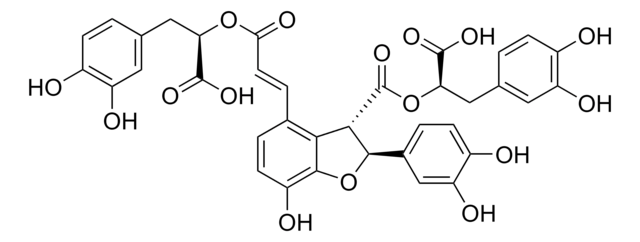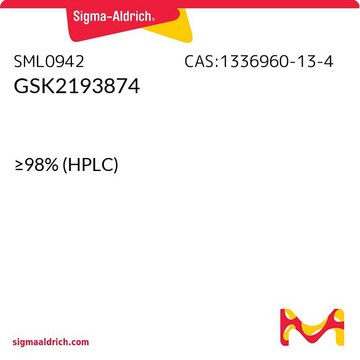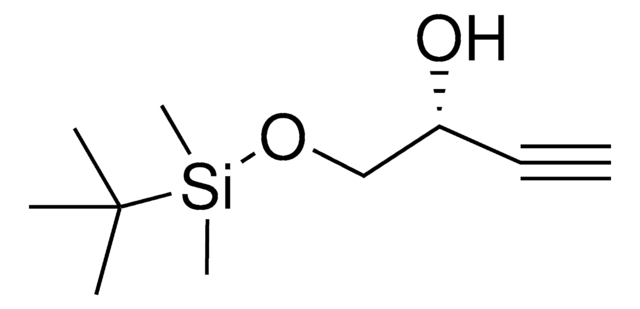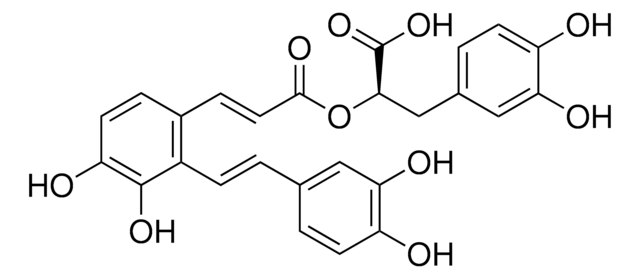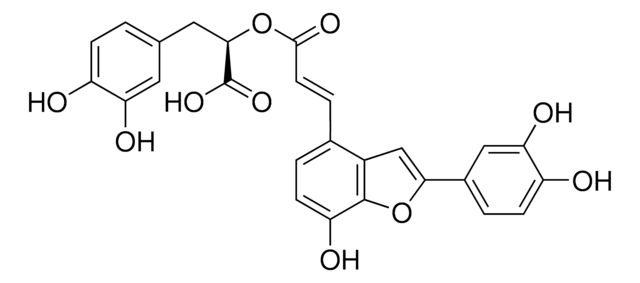推荐产品
生物源
plant
化驗
≥85% (LC/MS-ELSD)
形狀
solid
分子量
718.61
顏色
light yellow to brown
溶解度
water: soluble
應用
metabolomics
vitamins, nutraceuticals, and natural products
儲存溫度
−20°C
InChI
1S/C36H30O16/c37-20-6-1-16(11-24(20)41)13-27(34(45)46)50-29(44)10-5-18-3-9-23(40)33-30(18)31(32(52-33)19-4-8-22(39)26(43)15-19)36(49)51-28(35(47)48)14-17-2-7-21(38)25(42)12-17/h1-12,15,27-28,31-32,37-43H,13-14H2,(H,45,46)(H,47,48)/b10-5+/t27-,28-,31-,32+/m1/s1
InChI 密鑰
SNKFFCBZYFGCQN-PDVBOLEISA-N
一般說明
Salvianolic acid B, also known as Lithospermic acid B, is a polyphenol and a member of catechols. This bioactive natural compound is commonly found in plants such as Salvia Sp., Isodon rubescens, Mentha Sp., Canna indica, and Angelica keiskei. Existing research suggests that this plant-derived natural product possesses a range of biological properties, including anticancer, anti-inflammatory, hepatoprotective, cardioprotective and neuroprotective activities.
應用
It is a natural product derived from plant source that finds application in compound screening libraries, metabolomics, phytochemical, and pharmaceutical research.
生化/生理作用
According to the existing research, Salvianolic acid B plays potential role in modulating inflammation, cell signaling, and immune responses by inhibiting the expression of COX, ERK, TNF-α, NO.
Salvianolic acid B has anti-obesity, antiviral (COVID-19) and free radical scavenging activity.
特點和優勢
- High quality compound suitable for multiple research applications
- Compatible with HPLC and mass spectrometry techniques
其他說明
For additional information on our range of Biochemicals, please complete this form.
儲存類別代碼
11 - Combustible Solids
水污染物質分類(WGK)
WGK 3
閃點(°F)
Not applicable
閃點(°C)
Not applicable
Annarita Viggiano et al.
Applied and environmental microbiology, 84(4) (2017-12-03)
Chrysogine is a yellow pigment produced by Penicillium chrysogenum and other filamentous fungi. Although the pigment was first isolated in 1973, its biosynthetic pathway has so far not been resolved. Here, we show that deletion of the highly expressed nonribosomal
我们的科学家团队拥有各种研究领域经验,包括生命科学、材料科学、化学合成、色谱、分析及许多其他领域.
联系技术服务部门